HE WAS
BERLIN HONORS

Although he is repeatedly celebrated internationally for his great achievements and is of great importance to the rainbow capital, this outstanding historical figure is hardly known in Germany. With the Berlin-wide Magnus Hirschfeld Day, we will change that together!
Magnus Hirschfeld was a German physician and sex researcher, he was gay, socialist and Jewish. As early as 1919, he founded the first Institute for Sexual Science in Berlin, where he researched sexuality in all its diversity. At his institute, he also dealt with gender diversity. Hirschfeld thus created a safe space for people who did not fit into heterosexual or binary categories and he was already fighting for love at the time – in other words, against Section 175, which criminalized homosexuality.
In the 1920s, Magnus Hirschfeld was described as the “Soul of our Movement”. Based on this attribution, the first Berlin-wide Magnus Hirschfeld Day and the associated commemorative event will take place under the slogan “Magnus Hirschfeld – Soul of the Queer Community”.
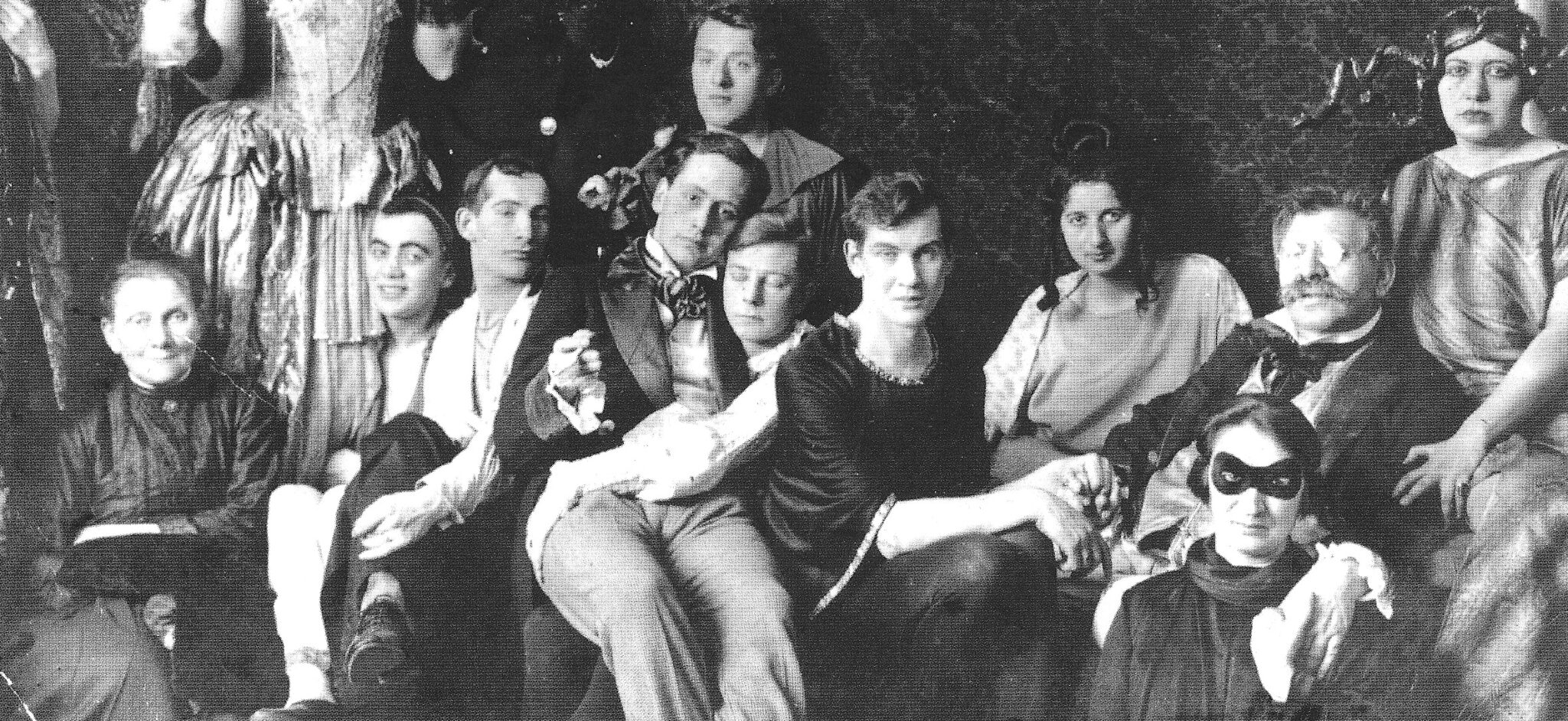
Hirschfeld was born on May 14, 1868 as the son of the Jewish physician Hermann Hirschfeld and his wife Friederike in Kolberg, in what is now Poland. Throughout his life, he campaigned for the rights of gays, lesbians and bisexuals, but above all trans* and queer people. On May 15, 1897, Hirschfeld founded the Scientific-Humanitarian Committee (WhK) together with the publisher Max Spohr, the lawyer Eduard Oberg and the writer Franz Joseph von Bülow in his Charlottenburg apartment at Berliner Straße 104 – today Otto-Suhr-Allee, directly opposite Charlottenburg Town Hall. The committee was the world’s first organization with the main goal of decriminalizing homosexuality. For Germany, this meant above all the abolition of Section 175, which criminalized homosexuality.
The National Socialists demonized Magnus Hirschfeld’s work. In 1920, Hirschfeld was attacked and seriously injured by right-wing radicals after a lecture in Munich. In 1930, Hirschfeld performed the first gender reassignment surgery together with the doctor Ludwig Levy-Lenz. Lili Elbe, a Danish painter, is probably the first intersex person with both male and female sexual characteristics on whom this gender reassignment surgery was performed.
Although Hirschfeld made medical history, some of his medical views and practices must be viewed critically from today’s perspective.
Later in 1930, Hirschfeld embarked on a trip around the world, from which he never returned to Germany. While he was abroad, on 6 May 1933, students from the German University of Physical Education and functionaries and members of the Nazi organization Deutsche Studentenschaft (German Student Body) ransacked and destroyed his institute. On May 10, 1933, his books and scientific writings were burned on Opernplatz, today’s Bebelplatz. Magnus Hirschfeld died on May 14, 1935 in exile in Nice, France.
Hirschfeld is considered a co-founder of the first homosexual emancipation movement and a pioneer for the rights of LGBTIQ+ people. This is another reason why Berlin is the birthplace of the queer community! Today, in addition to the Magnus Hirschfeld Federal Foundation, the Hirschfeld-Eddy Foundation and the Magnus Hirschfeld Society still bear his name.
We contribute to making Magnus Hirschfeld and his work known in all neighborhoods and districts of our rainbow capital with various campaigns.
Born on May 14, 1868 – died on his birthday on May 14, 1935, so it’s obvious: May 14 is Magnus Hirschfeld Day! Throughout the month of May, which is also the 10th Berlin Queer History Month, there will be various events dedicated to Hirschfeld. Be there and get to know “Aunt Magnesia”, as Hirschfeld was affectionately called by the community of the time!
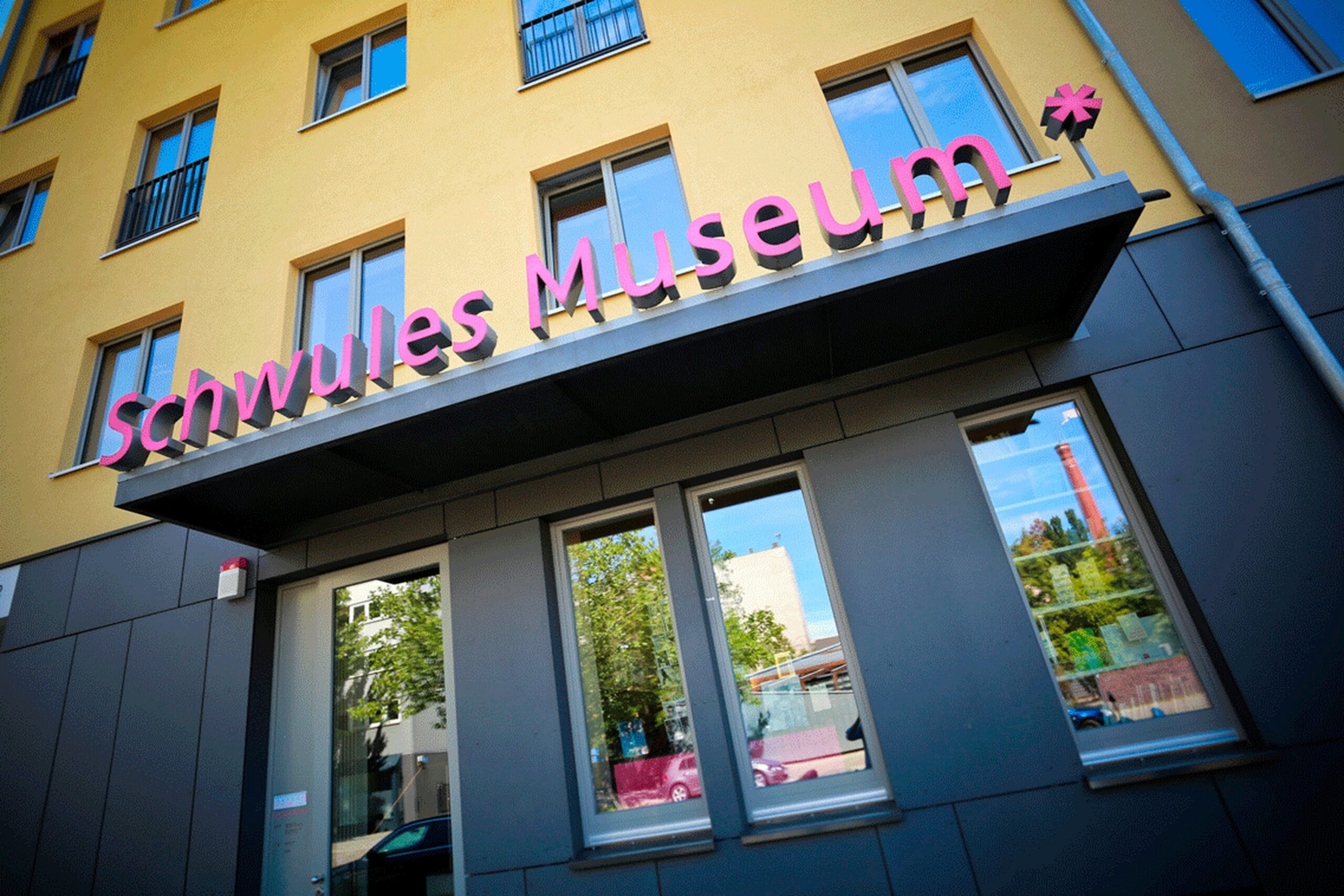
Lützowstraße 73, 10785 Berlin
The Schwules* Museum deals with lesbian, gay, trans*identical, bisexual and queer life stories, themes and concepts in history, art and culture and presents them.
The Schwules* Museum has been researching and presenting gay life since 1985. This work has resulted in a unique collection on gay social history and the development of gay emancipation, which also documents the suppression of gay self-expression. Over the course of time, the focus of the museum has expanded and today it provides information about the great diversity of sexual identities and gender concepts.
Changing exhibitions deal with individual aspects and realities of life for queer people in Berlin and around the world. Various events – discussions, guided tours, film screenings, lectures and more – round off the program of the Gay Museum.
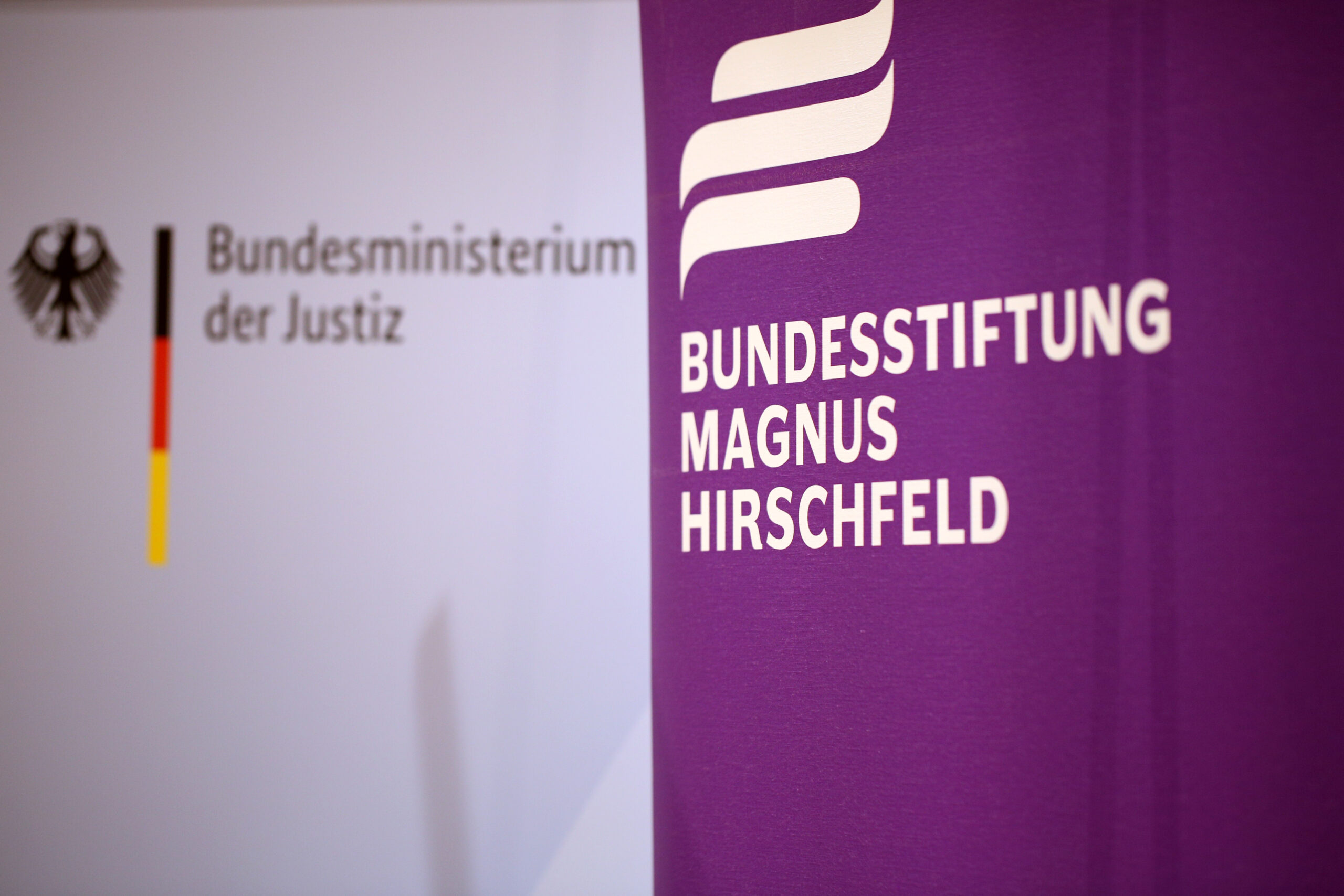
Mohrenstraße 34, 10117 Berlin
The Bundesstiftung Magnus Hirschfeld (Magnus Hirschfeld Federal Foundation) was established on October 27, 2011 by the Federal Republic of Germany, represented by the Federal Ministry of Justice. The office is based in Berlin. The Foundation is named after the physician, sex researcher and co-founder of the first German homosexual movement Magnus Hirschfeld (1868-1935).
The foundation aims to commemorate Magnus Hirschfeld, promote educational and research projects and counteract social discrimination against lesbian, gay, bisexual, trans*, intersex and queer people in Germany. The foundation aims to promote the acceptance of people with a non-heterosexual orientation in society as a whole; the same applies to people who do not define themselves exclusively as men or women. The Bundesstiftung Magnus Hirschfeld is located at Mohrenstraße 34 in Berlin-Mitte.

Kluckstraße 38, 10785 Berlin
The Magnus-Hirschfeld-Gesellschaft (Magnus Hirschfeld Society) was founded in (West) Berlin in 1982 to research and preserve the scientific and cultural legacy of the sex researcher Magnus Hirschfeld (1868-1935) and his Institute for Sexual Science (1919-1933). The Magnus Hirschfeld Society has been running the Research Center for the History of Sexology since 1992. The library and work rooms are located at Kluckstraße 38 in Berlin-Tiergarten.
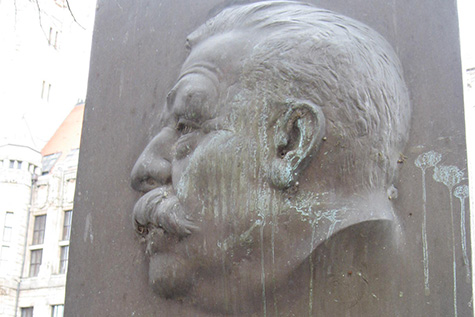
Otto-Suhr-Allee 93, 10585 Berlin
The memorial stele with portrait relief and inscription, designed by the artists August Jäkel and Emanuel Scharfenberg, was unveiled on May 14, 1995 on the sidewalk at Otto-Suhr-Allee 93 opposite Charlottenburg Town Hall by the then Charlottenburg District Office together with the Magnus-Hirschfeld-Gesellschaft, the Schwules* Museum, the Schwusos and other institutions.
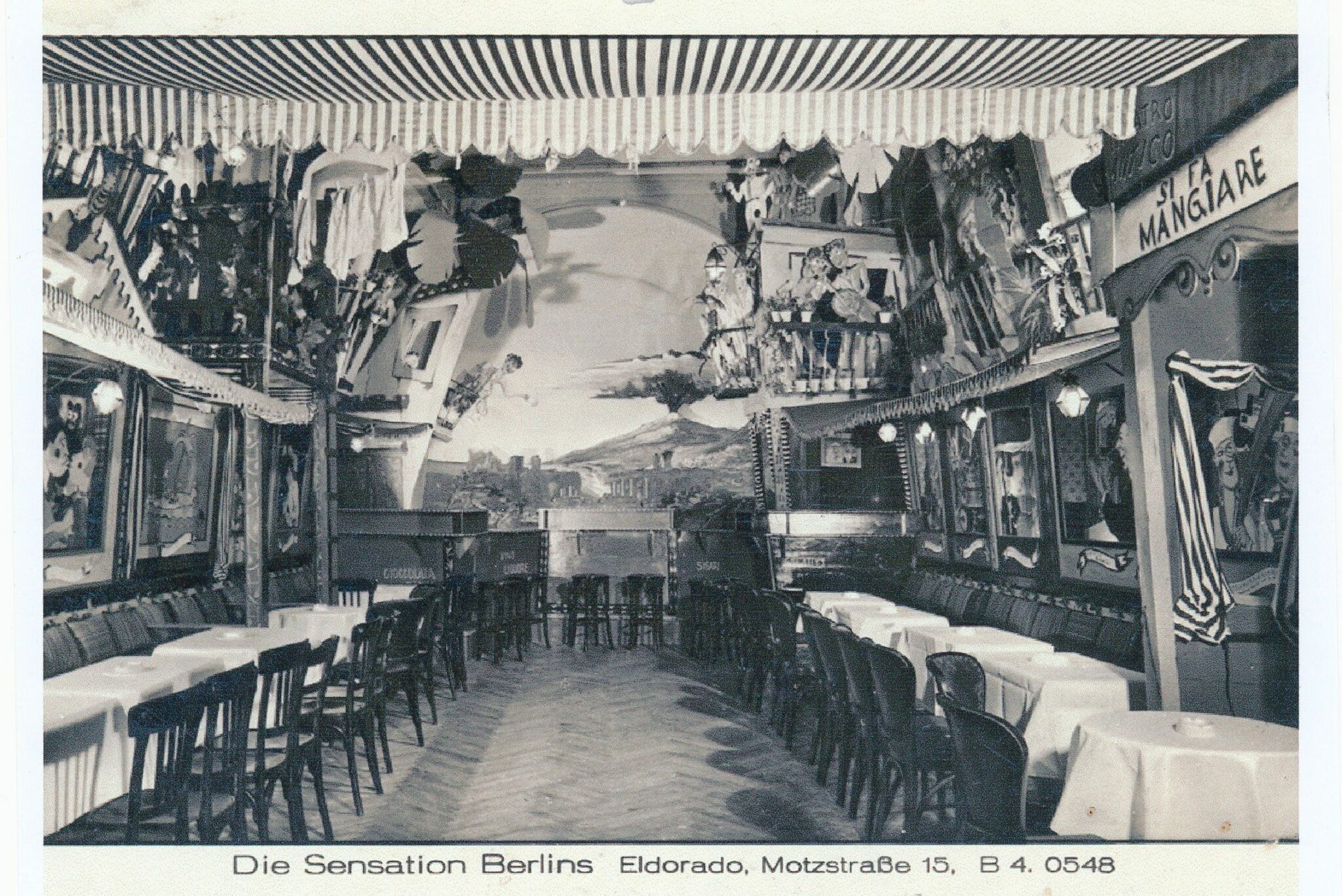
Motzstraße 24, 10777 Berlin
“Eldorado” was the name of two well-known transvestite bars (men and women) in Berlin before the Second World War. The first of the two “Eldorado” bars was located at what is now Martin-Luther-Straße 13, opposite the famous Scala variety theater (today: Martin-Luther-Straße 14-18) and the famous Horcher restaurant (today: Martin-Luther-Straße 12 on the corner of Fuggerstraße). The „Eldorado“ existed here under this name until March 1931, when the owner of the restaurant lost the legal dispute against her previous tenant Konjetschni over the name „Eldorado“. A dance hall still existed on this site until the beginning of May 1933, albeit under a different name.
One block away, at what is now Kalckreuthstraße 11, on the corner of Motzstraße 24, a second restaurant called “Eldorado” was opened in early 1930 by Ludwig Konjetschni, the previous sub-lessee of the “Eldorado” in Lutherstraße, after a dispute with the owner.
In Konrad Haemmerling’s alias Curt Moreck’s 1931 guide to “dissolute” Berlin, the “Eldorado” is described as a “transvestite establishment staged for cosmopolitan curiosity”. The program of drag shows and events was tailored to a predominantly heterosexual target group who, then as now, “dared to take a detour into mysteriously wicked Berlin in pursuit of a curious desire.”
The „Eldorado“ was very well known soon after it opened, and soon spread far beyond the city limits, even throughout Europe, and also became a magnet for tourists. Straight and gay worlds mingled there. Spending an evening at „Eldorado“ was very fashionable in Berlin society. Well-known bank directors and members of the Reichstag came here, as did many people from the theater and film industry. Among them were stars such as Marlene Dietrich, often together with her husband Rudolf Sieber and Claire Waldoff, as well as Wolfgang Cordan and Anita Berber. Magnus Hirschfeld was also well known in the restaurant, partly out of professional interest, and was affectionately known as Auntie Magnesia.
On April 15, 1930, the „Eldorado“ at Motzstraße 15 on the corner of Kalckreuthstraße 11 was granted a liquor license. The owner was Ludwig Konjetschni (Konecny), who had run the „Eldorado“ in Lutherstraße from 1926. So for several months (until the „Eldorado“ in Lutherstraße closed at the end of 1930) there were two Eldorados. However, the „Eldorado“ in Motzstraße did not last long.
In the course of the so-called “Prussian coup d’état” on July 20, 1932, Kurt Melcher became police commissioner of the city of Berlin (until February 14, 1933). In July he announced a “comprehensive campaign against Berlin’s dissolute nightlife” and in October it was decreed that all “dance parties of a homosexual nature must cease”. The „Eldorado“ probably had to close briefly for the first time as a result of these measures. On October 7, 1932, a newspaper article stated: “An act of moral reformers is applauded: the closure of the Eldorado”. However, the final closure did not take place until March 1, 1933.
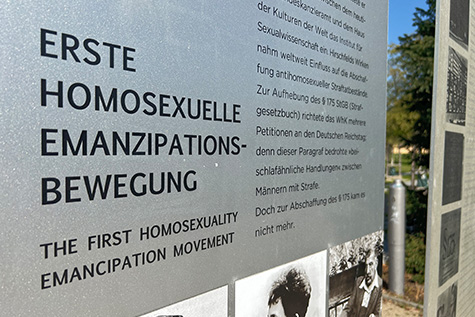
Magnus-Hirschfeld-Ufer, 10557 Berlin
Dr. Magnus Hirschfeld started the first homosexual movement as co-founder of the “Scientific-Humanitarian Committee” (WhK). The committee was the first organization in the world to campaign for equal rights for homosexuals, starting in 1897. Within a few years, the “Scientific-Humanitarian Committee” gained great recognition. Hirschfeld became both an admired and hated symbol of the emerging homosexual movement. In 1919, he founded the “Institute for Sexual Science” in Berlin.
On September 7, 2017, the memorial to the first homosexual emancipation movement was opened on the banks of the Spree in Berlin between the Luther and Moltke bridges. An initiative by the Lesbian and Gay Association in Germany (LSVD) was successful. The two memorial plaques commemorating the first homosexual movement had already stood here since 2011. The bank of the Spree has been called Magnus-Hirschfeld-Ufer since 2008.
In November 2015, a jury of nine experts selected the winning design – the Calla – from five designs submitted by an international working group from the fields of art, architecture and design. Dr. Berndt Schmidt, spokesman for the jury, explained the decision: “The jury is convinced that the monument has a self-confident and positive effect and develops an impressive long-distance impact. The Calla lily has female and male flowers on one plant. It is therefore a symbol of the normality of sexual and gender diversity in nature.”
The first homosexual emancipation movement began in 1897 with the founding of the “Scientific-Humanitarian Committee”. The Jewish physician and sexologist Dr. Magnus Hirschfeld (1868-1935) was the initiator and key representative of this movement.

John-Foster-Dulles-Allee 10, 10557
In 1919, Magnus Hirschfeld fulfilled a long-cherished wish. On July 6, he opened the world’s first “Institute for Sexual Science” in the Hatzfeld Palace in Berlin-Tiergarten. Politically, the Institute for Sexual Science came into being with the reform movements during the time of the Weimar Republic, scientifically in connection with the bio-medical explanations of human sexuality. The founding of the Institute is the first attempt to establish a sexology.
Within a short time, the institute became a well-known address for scientists and politicians from Germany and abroad. The citizens of Berlin appreciated it as a counseling and treatment facility for “physical and mental sexual ailments” and especially for “sexual intermediates”, as Hirschfeld called homosexuals, transvestites and hermaphrodites. At the Institute for Sexual Science, which consisted of over 100 rooms, more than 40 people worked in very different fields, in research, sexual counseling, the treatment of sexually transmitted diseases and sexual education of the population. The Scientific-Humanitarian Committee – the first homosexual organization – and the World League for Sexual Reform had their headquarters there.
Denounced as Jewish, social-democratic and immoral, the institute was looted and closed by the National Socialists in 1933. Hirschfeld was forced to watch the burning of his books on Berlin’s Opera Square in a Parisian movie theater. After an unsuccessful attempt to re-establish the institute in Paris, Magnus Hirschfeld died in Nice on his 67th birthday, May 14, 1935. The building was bombed in 1943. Despite various efforts to re-establish it after the war, the Institute for Sexual Science fell into oblivion.
Parts of the Institute for Sexual Science stood exactly where the House of World Cultures stands today.
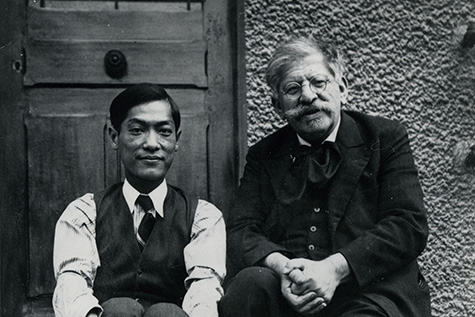
Otto-Suhr-Allee 93, 10585 Berlin
The physician and sexologist Dr. Magnus Hirschfeld lived in the house that once stood here from 1896 to 1910. On May 15, 1897, Dr. Hirschfeld began building the first German homosexual movement in Charlottenburg as founder and chairman of the Scientific-Humanitarian Committee. The plans for the Berlin “Institute for Sexual Science” were also drawn up here. After the National Socialists came to power, the Scientific-Humanitarian Committee was forced to dissolve itself in 1933. To this day, Magnus Hirschfeld’s committed work is a reminder of tolerance and acceptance of minorities in our society.
May 6 (1933):
Plundering and destruction of the Institute
for Sexual Sciences
May 10 (1933):
Book burning on what is now Bebelplatz, where his
books and scientific writings were also burned
May 13 (1933):
Christopher Isherwood leaves Berlin
May 14:
Birthday (1868) and anniversary of death (1935) of Magnus Hirschfeld
May 15 (1897):
Foundation of the Scientific-Humanitarian
Committee (WhK) in 1897
You can download the campaigns posters for your own events or initiatives in formats ranging from A4 to A1.
You can download the official logo of Magnus Hirschfeld Day for your own contributions to the event here. The formats available are EPS, JPEG, and PNG.